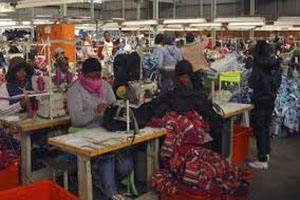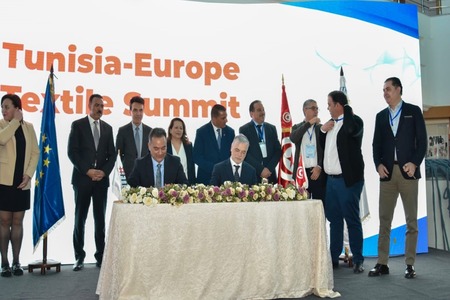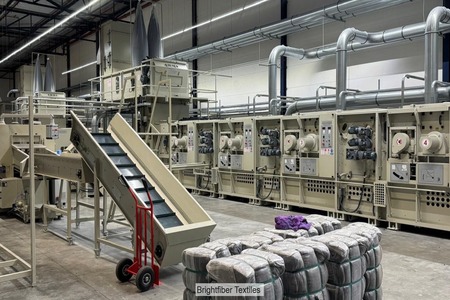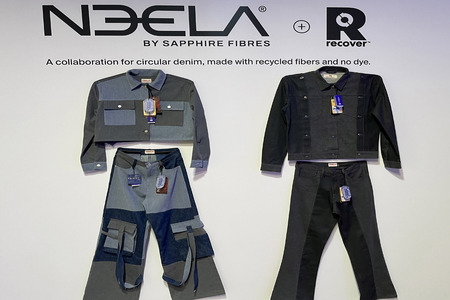
SA clothes retailers turning to local supply as rival brands land
YarnsandFibers News Bureau 2015-09-30 14:30:00 – South AfricaCheap Chinese clothes imports almost broke the back of local garment makers, but the sector has started to recover after the government invested more than 2 billion rand ($149 million) in upgraded production lines and more innovative technology. South African retailers are now working more closely with a resurgent domestic textile industry to help keep away global fashion giants muscling in on the continent’s most lucrative market.
However, the majority of clothing sold in South Africa by local brands such as The Foschini Group (TFG), Truworths, Mr Price and Edcon is still sourced from Asia.
But more competition is expected from global brands such as Inditex’s Zara and Hennes & Mauritz as they expand in a sector whose value rose to more than 200 billion rand ($15 billion) at the end of 2014 from 8 billion in 2001.
Among the continent’s most brand-conscious consumers, South African households spent an average of 5.3 percent, or 582 rand, of monthly income on clothing and footwear in 2014, above spending on education at 373 rand, according to the Bureau for Market Research at the University of South Africa.
Keen to tap this vibrant market, Zara opened in South Africa four years ago and now has six stores. Australian no-frills chain Cotton On has described the country as its fastest growing market while Britain’s Top Shop and Forever 21 arrived recently.
H&M is set to open a vast store next month. At 50,000 square feet (4,700 square meters) the outlet in Cape Town’s trendy V&A Waterfront mall will be one of H&M’s biggest and the Swedish retailer will open another outlet in Johannesburg in November.
Inditex, which pioneered the idea of producing a constant supply of new styles from factories close to its biggest markets - a concept known as “fast fashion†- flies in clothes twice a week from suppliers in Portugal, Turkey and Spain.
H&M, which produces the bulk of its garments in Asia, is expected to adopt a similar approach.
Justin Barnes, chairman at B&M Analysts which advises the government and the clothing industry said that to defend their market share, South
African retailers should take advantage of the faster speeds at which local suppliers can get clothes to market.
The Foschini Group is aiming to work more closely with local suppliers, and about 65 percent of its women’s wear is now made in South Africa.
Some South African factories can get fresh garments into stores within 32 days, and most are aiming to regularly beat a maximum cut-off target of 42 days, though not surprisingly that’s still slower than the fast fashion pioneer.
According to Inditex, depending on the availability of fabrics and the complexity of the garment production, it can race from design to the store in less than two weeks.
South Africa has about 900 clothing factories left, just over half an estimated 1,600 plants at the sector’s peak in 1996, according to data from the clothing manufacturing industry bargaining council.
From 2010 to 2014, productivity jumped 36 percent while employment in the clothing, textile, footwear and leather industry rose to 88,657 in the year to March 2015 from 87,386 a year earlier. That’s still a far cry from the 1996 peak of 228,000 jobs, before Chinese imports hammered local factories.
But now rising wages in China and a weaker rand currency, which touched record lows of 14 rand to the dollar in September, are starting to favour local clothes production. For now, local clothes makers hope more local retailers will be turning to them to help rival the big brands coming to town.
Fundamentally, the currency has effectively changed the landscape completely. The longer-term trend is for it to weaken and, given that fact, retailers want to be predisposed to an environment where you benefit and are not penalised, said Abdul Davids, research head at Kagiso Asset Management.
Before taking into account any shipping costs or import tariffs, a South African factory can already produce a cotton T-shirt for just under $2, compared to 1 euro ($1.12) in Turkey and the $0.50-$0.80 in China, said Kagiso’s Davids.
Global brands could eventually be tempted to source locally. H&M, which is already considering buying clothes from Ethiopia, said it has no plans for production in South Africa, but does not rule it out for the future.
Market Intelligence
Ask for free sample Report

experience
Customer Base
dedicated team
Countries Served Worldwide








